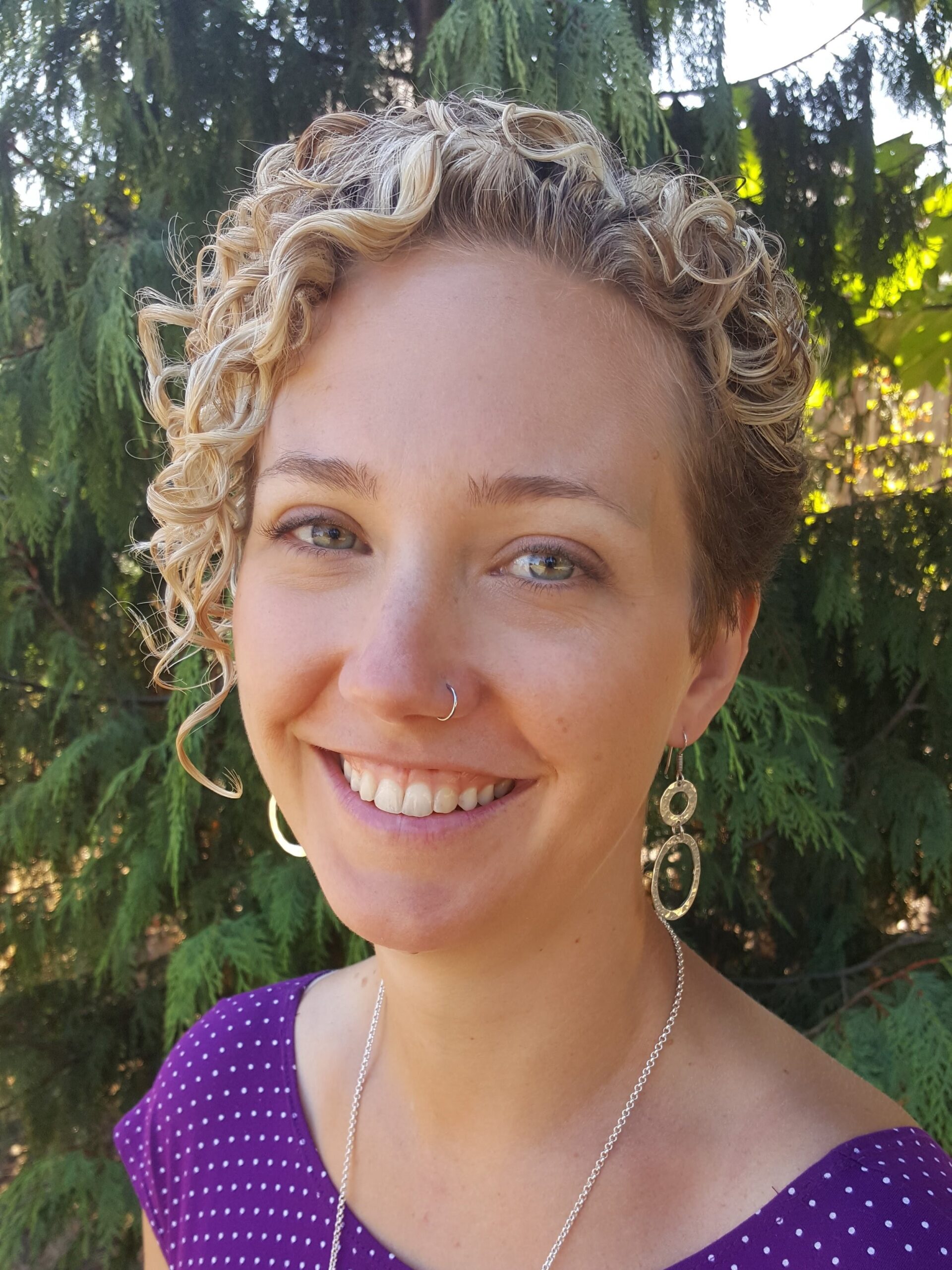There have been many models proposed to us to grow our churches or re-grow them. And recently there has been a deluge of articles, events and conferences all dedicated to the theme of church “post-pandemic”. Even before the pandemic was over, many were analysing its impact and the lessons we learned.
But despite the overwhelming trends of decline which began around 1965 for many mainline denominations, there are flashes of light and inspiration happening all over the place. If there is a model to be found, it lies in Jesus himself, and in particular, his death and resurrection. For there needed to be death before there was new life. So it is with the Church – and resurrection is happening right before our eyes.
1. Ingrid Harloff Brown:
Weird Church
Cumberland BC
Ingrid never set out to plant a new church. As a younger United Church minister living on Vancouver Island, she offered pastoral support for members of a local church that was closing.
Congregants said that they would miss getting together for coffee and meaningful conversation. In response, Ingrid set aside time in a local coffee shop every Friday morning for coffee and meaningful conversations. She put up posters around the town and, to her surprise, a large number of people came to the coffee shop.
Interestingly, only a small handful of people from the closed church came. In those gatherings for coffee, and later for meals, a community was formed, a church came into existence. But there was no intention of moving into a traditional church building.
Things came to a head when the coffee shop filled to overflowing and they needed a larger space. One of the original members of the closed Church, who was a regular at the coffee gathering, still had the keys to the building which had not been sold. With the agreement of the local conference, they moved their coffees and meals into the building.
One of the benefits they found, as church planters, was the discontinuity with the previous congregation. This meant they could go in and clean up, throw junk out, use the cups and saucers and re-imagine the building in a new way without having to worry about how things were done before, or territorial claims to control of the kitchen. The death of one community gave space for the new.
Why the name? Because Cumberland is an idyllic, idiosyncratic community on Vancouver Island over looking the Pacific Ocean which prided itself on its weirdness. Increasing gentrification was erasing that character, to the extent that a local campaign emerged to “Keep Cumberland Weird”!
The name of the Church then keyed into an important value for that community. This is key to Ingrid’s focus: deeply local and locally connected. It is progressive, artsy with an emphasis on the beautiful environment in which Cumberland is located. It is not a model and it is not even a method of any kind. Ingrid read the local community and took an initiative. But what she does in that place would not work in another place. Which leads me across the country to Hamilton.
2. Kevin Makins:
Eucharist Church
Hamilton
Kevin founded Eucharist Church in 2010 and has written a book about it: Why Would Anyone Go to Church? As he works through the story of his church he answers his question: because it matters.
You might think that with a name like that, Eucharist Church is firmly Anglican. Far from it! Kevin grew up in the Lutheran church before moving into evangelical circles.
He was drawn to create a church in downtown Hamilton. This is an area of great deprivation but the more they put down roots in the community, the more diverse and eclectic they realized it was. This gave their church its character. Their first location was in a disused factory space, and they met on Sunday afternoons because everyone wanted to sleep in.
They called their church “Eucharist” because they wanted to use the meal imagery and convey a sense of a diverse group of individuals, gathered around a table with room for everyone. For him, the ancientness of the name juxtaposed nicely with the hipster space they rented: a re-claimed factory space.
A telling part of their story occurred later in their development as a community, when they rented space from an historically significant, but dwindling mainline church – that shall go nameless!
Every Sunday they had to upack and re-pack everything they needed to create their space but it became increasingly clear that the existing congregation didn’t like having them in their building. One Sunday when they arrived to set-up and there were yellow sticky notes all over the building. They were absolutely everywhere. They found a note which said: “EVERY YELLOW STICKY NOTE IS A SCRATCH THAT YOU PEOPLE PUT IN THIS BUILDING.”
Shortly thereafter, their lease was abruptly terminated. It is tragic that a dwindling church would rather dwindle than make space for a new congregation. The lesson is that we cannot put new wine into old wineskins. There sometimes needs to be death before resurrection.
Eucharist Church, though coming from an evangelicalistic background, is also deeply progressive and affirming. This comes from their name and vision of everyone gathered around a table with room for more.
3. Jacqueline Daley:
St Margaret,
New Toronto
Jacqueline came and led our recent clergy conference and talked about the impact the pandemic had upon their ministry. Before she came the parish was slowly dying, and she only went to be an interim priest. This turned into a permanent position.
The pandemic may have shut down worship services, but it did not shutter St Margaret’s. Instead, it accelerated the development of their community engagement and placed this work firmly to the forefront of the Church.
They were able to open as a place where the food insecure could go. That work drew the financial support of charitable organisations. The church demonstrated its relevance by meeting local needs.
A key part of the work they do is Jacqueline’s own listening. She listens to people, listens to other organisations. She listens to people walking in the park or sitting next to her at community meals. The fruit of this is to attune their ministries to the needs expressed.
For example, when listening to parents in the local park she learned where the gaps were in the local summer camp offerings. These camps are essential to parents who work full time. So, she scheduled their Bible camp to fill that gap. This may be a small example, but it makes a big difference to the vitality of their programmes. They are not guessing and hoping for the best. They listen and plan.
St Margarets is now a community hub. Food is central and their ministries attract much support. During COVID a group of local charities gathered to coordinate their collective work. They invited Jacqueline which means the church is at that table. The church can show that it is relevant and worth supporting by actively engaging with the needs of the local community.(A picture of Rev Daley is on page 4.)
What can we learn from each of these stories?
The big lesson I take away is that there is no single model that ensures a vibrant church. Each of these leaders has been deeply implicated into the communities in which they are placed and go from there. Which means that each church is wildly different in its character. Being in the community, being truly incarnational in the community is the starting point. Everything else flows from there.
Second, liturgy follows the mission. Instead of coming with a ready-made liturgical expression, community connection comes first and then liturgy and worship are formed. This brings a new kind of freedom to the worshipping life of the church which we may find surprising.
As an ex-evangelical, Kevin has been discovering Anglican liturgical resources and in particular the Book of Common Prayer. They are finding much depth and spiritual vitality in resources we may take for granted.
Yet they use them in flexible ways which we would do well to pay attention to. For Jacqueline, the mission to the community drives the vitality of the church and financial resources come to support that work. The Sunday morning is not the most important time of week
Finally, the pandemic seems to have served as the final nail in the coffin in some of the ways we have operated our churches. There are communities that never re-opened after restrictions were lifted. But other churches, like St Margaret New Toronto, found a whole new vitality through the pandemic.
If we are in a time now, it is the post-everything church. Begin with the local community, find out what is happening all around you, listen deeply. For if there is a model to be found, it lies in Jesus himself, his death and resurrection. For there needed to be death before there was new life. So it is with the Church: and resurrection is happening right before our eyes.
-

Neil Mancor
The Rev Canon Dr Neil Mancor is the Congregational Develoment Officer for the Diocese.



